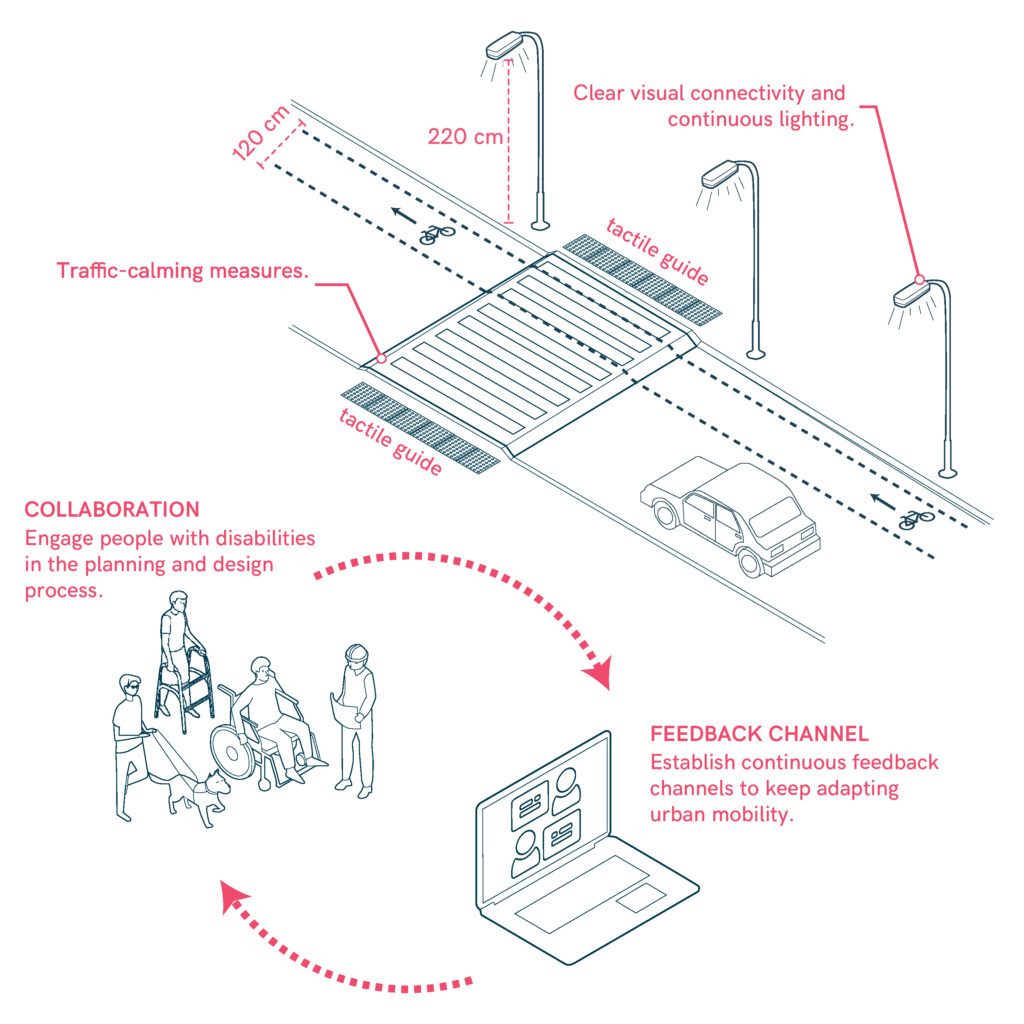Community Engagement and Feedback
Actively engaging communities in the planning and design of urban mobility solutions ensures that the needs of all users, particularly those with disabilities, are addressed. By establishing continuous feedback channels and involving diverse community members in decision-making processes, we can create more inclusive and accessible transportation systems that reflect the true needs of the population.

- Engage people with disabilities in the planning and design process to ensure roadways reflect their needs.
- Establish continuous feedback channels to keep adapting urban mobility solutions for better inclusivity.
- Design spaces with clear visual connectivity and continuous lighting.
- Integrate traffic-calming measures like speed bumps and raised crosswalks for enhanced pedestrian safety.
- Ensure roadways are properly dimensioned and include safe bike lanes for cyclists.
Sources
- https://accessible-eu-centre.ec.europa.eu/content-corner/digital-library/en-172102021-accessibility-and-usability-built-environment-functional-requirements_en
- https://www.iso.org/standard/71860.html
- https://www.t-l.ch/collectivites/guide-des-amenagements-pour-les-transports-publics-routiers-tl/
- https://www.leitfadenbarrierefreiesbauen.de/fileadmin/downloads/archiv/barrierefreies_bauen_leitfaden_en_bf_version2.pdf
- https://www.vitoria-gasteiz.org/http/wb021/contenidosEstaticos/especial/cea/20190917/Avance_PMSEP_2020_2030.pdf
- https://www.punt6.org/es/books/espacios-para-la-vida-cotidiana/
- Carers
- Children
- Cognitive
- Cognitive abilities
- Decolonial perspective
- Digital
- Digital barrier
- Enviroment
- Environmental
- Gender and generations
- Gender perspective
- Hearing impairment
- Low-education
- Low-income
- Older people
- Other
- Physical abilities and features
- Sensory and Physical
- Socioeconomic
- Visual impairment